In the wild, survival is the name of the game, and these predators are among the elite competitors. Whether they’re on land, in water, or soaring through the sky, these creatures have honed their skills to almost always secure their next meal. If you’ve ever wondered which predators have the highest success rates in the hunt, you’re in the right place. We’re diving into the world of nature’s top hunters and exploring why they rarely miss their mark. So, get ready to be amazed by the efficiency and prowess of these 14 exceptional predators.
1. African Wild Dog
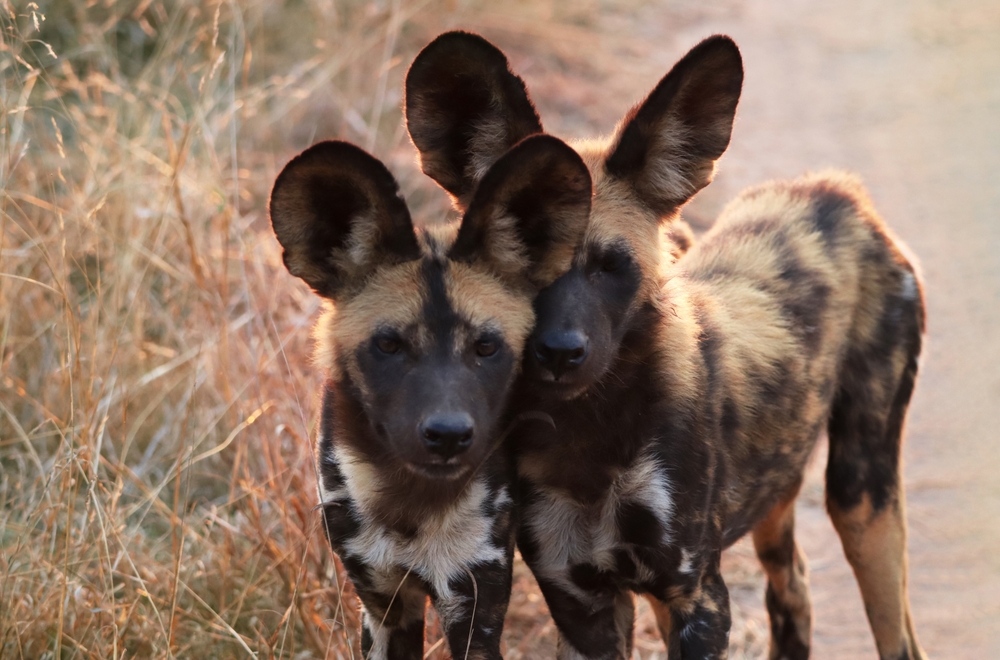
African wild dogs are incredibly efficient pack hunters, with success rates as high as 80%. These canines are social creatures, working together to outsmart their prey through coordinated chases and strategic planning. Their incredible stamina allows them to run at speeds up to 44 miles per hour, often wearing down their prey over long distances. The pack structure is key to their success, with each member playing a crucial role in the hunt. According to a study published by Dr. J. Weldon from the University of Pretoria, their communication and teamwork are unparalleled, making them one of the most deadly hunters in the animal kingdom.
Their prey includes a range of animals such as antelopes, warthogs, and even larger mammals like wildebeests. African wild dogs use their acute senses of sight and hearing to locate prey, often starting hunts in the early morning or late afternoon. Once they’ve zeroed in on a target, their relentless pursuit and strategic pack work usually seal the deal. Often, they’ll take turns leading the chase, allowing others to rest and conserve energy. This cooperative approach is what sets them apart from many other solo hunters in the wild.
2. Peregrine Falcon
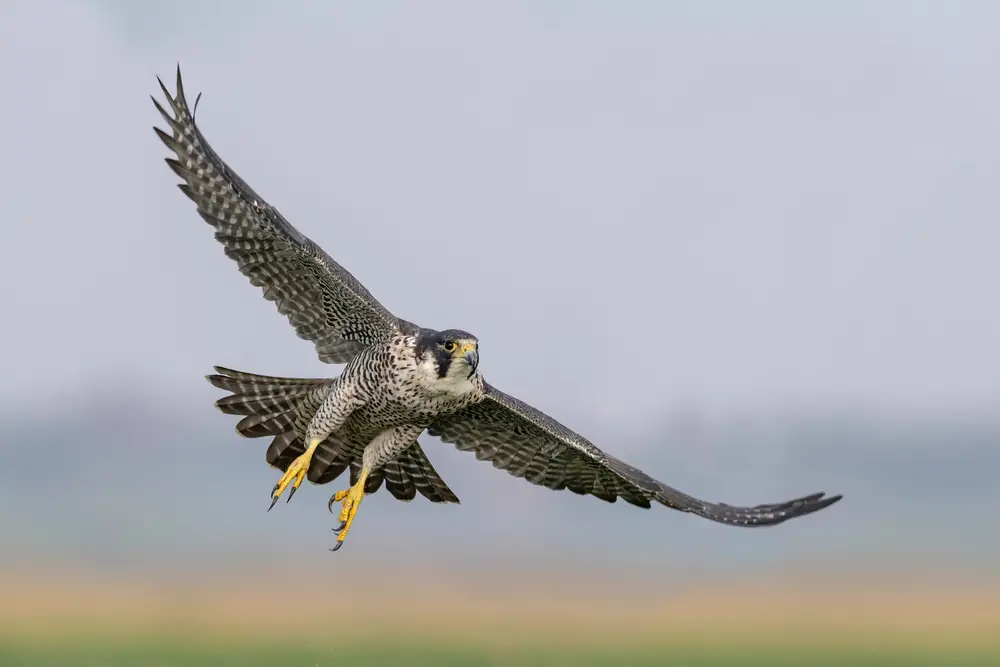
The peregrine falcon is renowned for its incredible speed, making it a formidable predator in the skies. It’s not just fast, it’s the fastest animal on the planet, reaching diving speeds of over 240 miles per hour. This speed allows the peregrine falcon to swoop down on its prey with unparalleled precision and surprise. Its diet mainly consists of other birds, which it strikes mid-flight using its strong talons. With exceptional eyesight, the falcon can spot potential prey from a mile away, ensuring that its high-speed attack is always accurate.
The peregrine falcon’s hunting strategy involves a calculated dive known as a stoop, where it folds its wings and plummets toward its prey with a terrifying velocity. This element of surprise, combined with its speed, gives it a high success rate in capturing prey. Its aerodynamic body and strong, pointed wings are perfectly adapted for these high-speed dives. Once the prey is struck, it’s usually killed instantly due to the force of the impact. Despite being top-tier predators, peregrine falcons face threats from habitat destruction and pollution, which can affect their ability to hunt effectively.
3. Orca
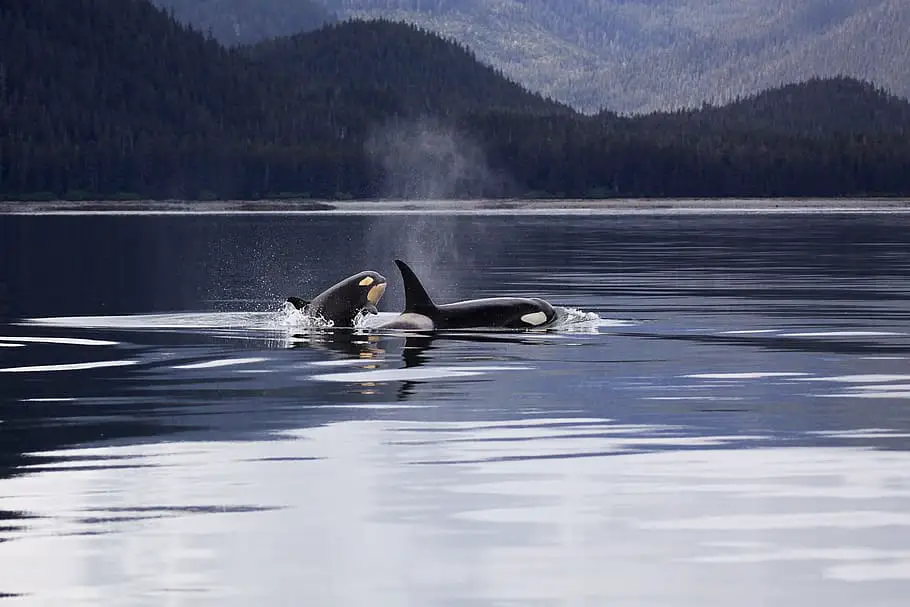
Orcas, or killer whales, are apex predators that dominate the oceans with their intelligence and teamwork. They are known to have a hunting success rate of about 80%, largely due to their sophisticated social structures and communication skills. Orcas hunt in pods, using strategies that are often passed down through generations. They employ a range of techniques, such as creating waves to knock seals off ice floes or coordinating to trap schools of fish. Dr. Ingrid Visser, a marine biologist, notes that orcas have been observed executing complex hunting strategies that rival even human ingenuity.
Their diet is diverse, ranging from fish and squid to larger marine mammals like seals and even whales. Orcas use echolocation to detect prey, emitting clicks and listening for the echoes that bounce back, which helps them gauge the distance and size of their target. Once located, they utilize their intelligence to form a plan, often engaging in dramatic hunts that showcase their power and coordination. These social and intelligent creatures are also known for playing with their prey before consumption, highlighting their complex behavior. Despite their prowess, they face threats from pollution and declining fish stocks, which may impact their hunting grounds.
4. Dragonfly

Dragonflies might not be the first creatures that come to mind when you think of deadly predators, but they are remarkably successful hunters. With a success rate of about 95%, they are among the most efficient hunters in the insect world. Dragonflies rely on their incredible aerial abilities and compound eyes, which offer nearly a 360-degree field of vision. This allows them to detect even the slightest movements from their prey, which typically includes mosquitoes, flies, and other small insects. They execute swift and precise aerial maneuvers, capturing prey in mid-flight with their legs.
The dragonfly’s flight capabilities are due to its two sets of wings, which can move independently, allowing it to hover, dart in any direction, and even fly backward. This makes them agile hunters that can outmaneuver many other creatures in the air. They capture their prey with remarkable accuracy and speed, using their legs to form a basket around the target. Once caught, the dragonfly’s powerful jaws make quick work of its meal. Their hunting prowess is crucial for controlling insect populations, making them valuable allies in ecosystems worldwide.
5. Great White Shark

Great white sharks are formidable oceanic predators with a reputation for being efficient hunters. While their success rate is variable, in some regions and conditions, it can be as high as 50%. These sharks rely on their keen sense of smell and acute hearing to detect prey from miles away. Their preferred hunting strategy is the ambush, using the element of surprise to attack their prey from below. Marine biologist Dr. Gregory Skomal points out that great whites use their body mass and speed to deliver powerful bites, often incapacitating prey in a single strike.
The great white’s diet primarily consists of marine mammals such as seals and sea lions, as well as fish and seabirds. Their teeth are serrated and designed to tear flesh, making them highly effective at securing their meals. They also possess a unique ability to detect the electrical fields generated by other animals, allowing them to hunt even in murky waters. Despite their power and efficiency, great white sharks are vulnerable to threats such as overfishing and habitat loss. These challenges underscore the importance of conservation efforts to protect these apex predators and maintain the balance of marine ecosystems.
6. Bald Eagle
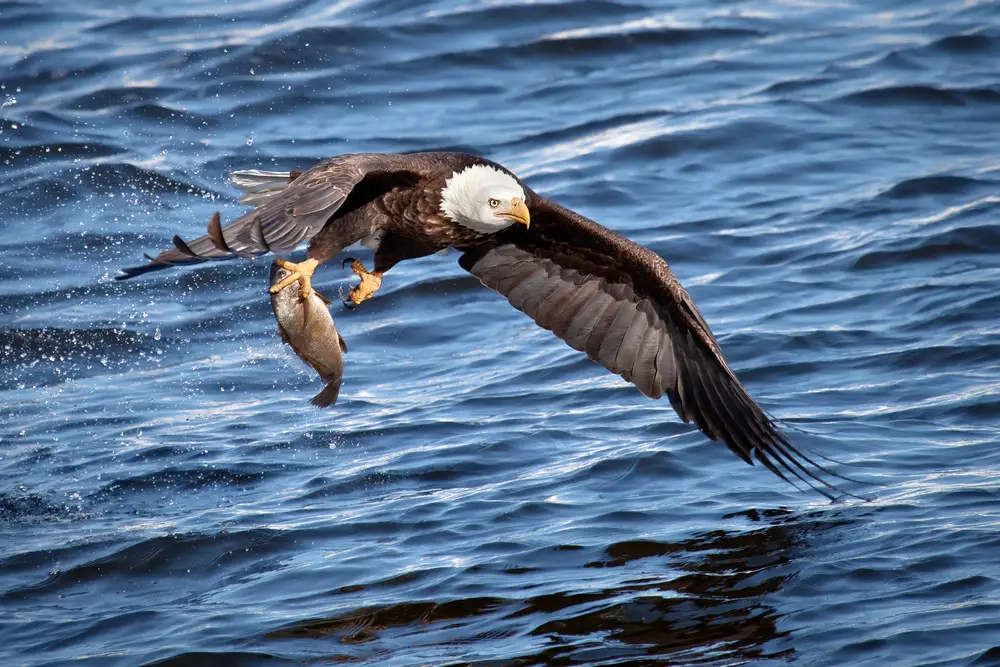
The bald eagle, a symbol of strength and freedom, is an adept hunter of the skies, boasting a success rate of around 30-40%. While not the highest on this list, its keen eyesight and powerful talons make it a formidable predator. Bald eagles predominantly hunt fish, swooping down to snatch them from the water with precision. They also scavenge and will hunt small mammals or birds when fish are scarce. Their vision is four to five times sharper than that of a human, allowing them to spot a fish from hundreds of feet above.
Bald eagles are also strategic in their hunting methods, sometimes stealing prey from other birds or scavenging carrion. Their large wingspan grants them the ability to soar effortlessly, conserving energy while searching for food over vast distances. Once they’ve locked onto a target, they dive at incredible speeds, using their sharp talons to catch and kill. This combination of strength and strategy ensures that they can provide for themselves and their young. Despite their prowess, bald eagle populations have faced challenges from pollution and habitat destruction, though conservation efforts have helped them recover significantly in recent decades.
7. Cheetah
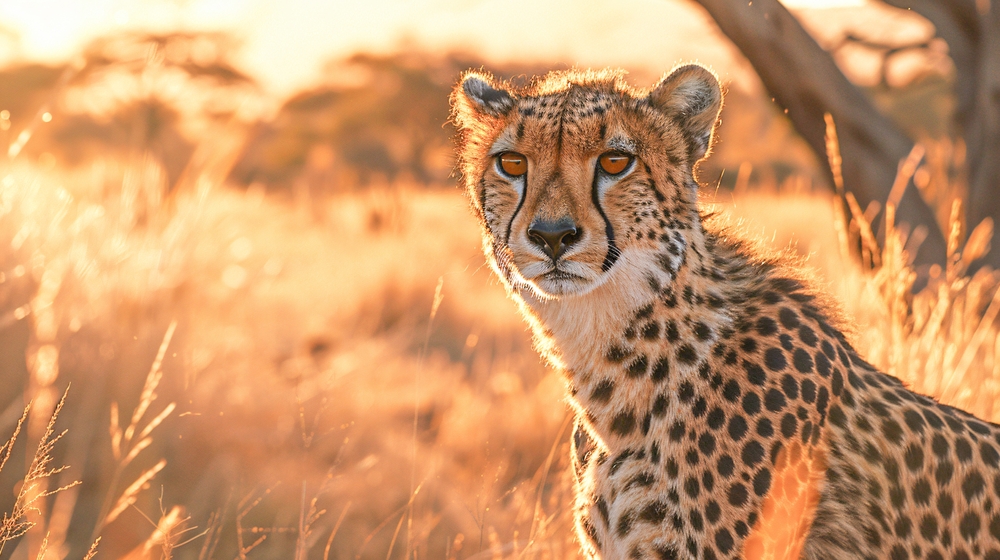
Cheetahs are renowned for their incredible speed, making them effective hunters on the African savannas. With a hunting success rate of approximately 40-50%, cheetahs rely on their acceleration and agility to outrun prey. These big cats can reach speeds up to 70 miles per hour, but it’s their ability to change direction swiftly that often secures the kill. Cheetahs typically hunt smaller ungulates like gazelles and impalas, stalking to get as close as possible before launching a high-speed chase. Wildlife researcher Dr. Laurie Marker highlights that cheetahs use a combination of stealth, speed, and precision to catch their prey in short, intense bursts of action.
The cheetah’s body is perfectly adapted for speed, with long legs, a flexible spine, and non-retractable claws that provide traction. Their lightweight frame and specialized respiratory system allow them to maintain high speeds for short distances. During a chase, cheetahs use their tails to balance and steer, helping them make sharp turns to match their prey’s evasive maneuvers. Once they catch up, they use their dewclaws to trip the prey before delivering a suffocating bite to the throat. Despite their speed and hunting prowess, cheetahs face threats from habitat loss and competition with larger predators, making conservation efforts vital for their survival.
8. Snow Leopard

Snow leopards are elusive and solitary hunters, perfectly adapted to the rugged mountain terrains of Central and South Asia. With a success rate of about 30-40%, these big cats are efficient predators in their harsh habitats. Their primary prey includes blue sheep, ibex, and other mountain ungulates, which they stalk and ambush with stealth. Snow leopards have powerful hind limbs that allow them to leap up to six times the length of their body, enabling them to close the distance on unsuspecting prey. Their thick fur and long tail help them maintain balance and warmth in the cold, high-altitude environments they call home.
The snow leopard’s camouflage is one of its greatest assets, with its spotted coat blending seamlessly into the rocky landscapes. They are primarily crepuscular, hunting at dawn and dusk when their prey is most active. Snow leopards use their acute senses of hearing and sight to locate prey, often stalking silently before launching a surprise attack. Their solitary nature means they rely solely on their own skills and abilities, unlike pack or pride hunters. Despite their efficiency, snow leopards face threats from poaching and habitat fragmentation, posing challenges to their continued survival in the wild.
9. Saltwater Crocodile
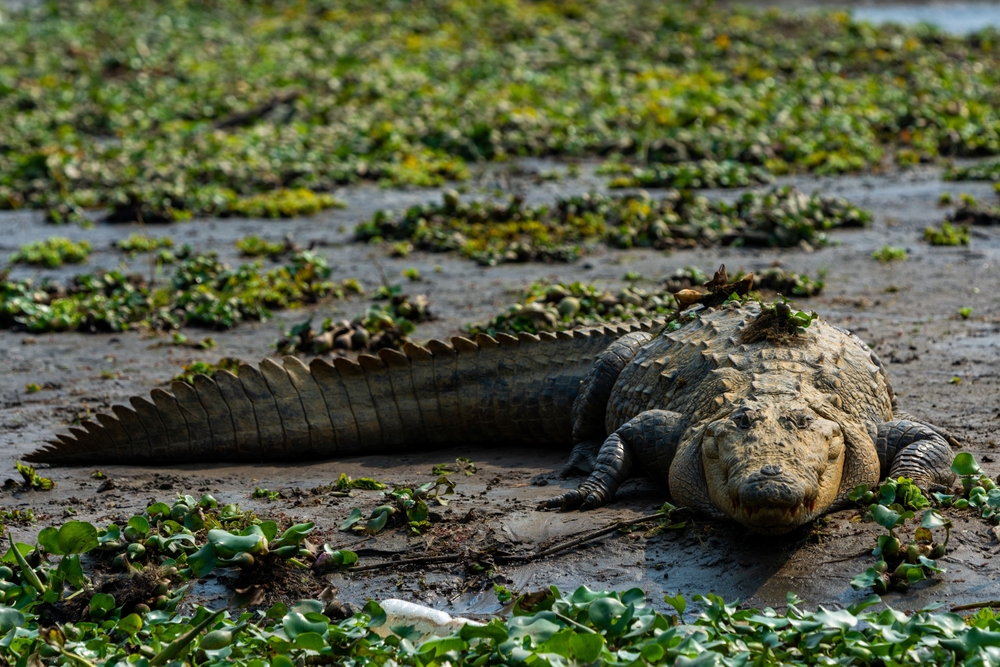
Saltwater crocodiles are apex predators found in the brackish and freshwater regions of Southeast Asia and Australia. Known for their immense size and power, they have a hunting success rate that can reach up to 50% in their natural habitat. These crocodiles are opportunistic hunters, feeding on a wide range of prey, including fish, birds, and mammals. They use their incredible stealth and patience, often lying in wait for hours before launching a lightning-fast ambush from the water. Their powerful jaws and strong bite force, one of the strongest in the animal kingdom, ensure that once they grab hold of prey, escape is nearly impossible.
The saltwater crocodile’s ability to remain completely still and nearly invisible in the water gives it a significant advantage over unsuspecting prey. They are known to employ a “death roll,” spinning violently to subdue and dismember their catch. Their sensory organs, located on top of their head, allow them to breathe and see while almost entirely submerged. This adaptation is crucial for detecting prey movements and timing their attacks perfectly. Despite their dominance, saltwater crocodiles are vulnerable to habitat loss and illegal hunting, highlighting the need for ongoing conservation efforts.
10. Polar Bear
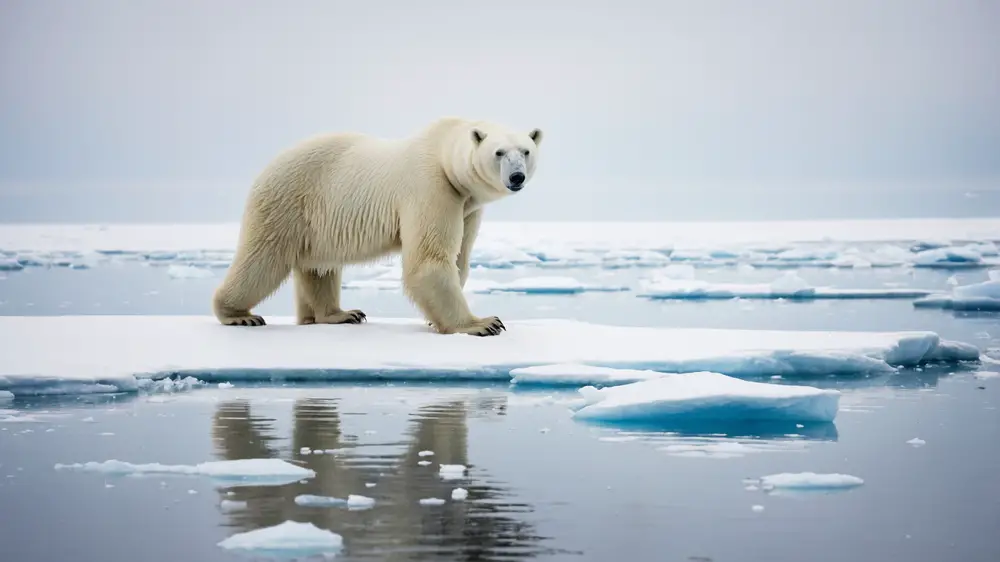
Polar bears are top predators in the Arctic, relying on their strength and stamina to hunt seals, their primary food source. Their success rate varies, but in ideal conditions, it can be as high as 50-60%. Polar bears use sea ice as a platform to hunt, often waiting by breathing holes to ambush seals as they surface for air. Their keen sense of smell enables them to detect seals nearly a mile away and beneath several feet of compacted snow. With powerful limbs and sharp claws, polar bears can deliver swift and deadly strikes to capture their prey.
The polar bear’s white fur provides camouflage against the ice and snow, making them a stealthy hunter in their icy habitat. They are patient predators, capable of waiting for hours or even days at a single seal breathing hole. Once they spot their prey, they use their bulk and strength to pull the seal from the water, securing a vital meal. Polar bears also display opportunistic feeding behaviors, scavenging on carcasses or foraging for other available food sources. Climate change poses a significant threat to polar bears, as melting sea ice reduces their hunting grounds and opportunities to find food.
11. Lion

Lions, often dubbed the “king of the jungle,” are powerful predators with a success rate of around 20-30% when hunting alone, but this can increase significantly when working as a pride. These big cats use teamwork and strategy to take down large prey such as zebras, wildebeests, and buffalo. Female lions, or lionesses, do most of the hunting, using their cooperative nature to encircle and ambush targets. With a combination of stealth and strength, they work together to isolate and overpower their prey. Despite their hunting prowess, lions face threats from habitat loss and human-wildlife conflict in many parts of Africa.
Lions are primarily nocturnal hunters, taking advantage of the cover of darkness to stalk their prey. Their keen night vision allows them to see in low-light conditions, giving them an edge over many other animals. In addition to their vision, lions rely on their acute senses of smell and hearing to locate prey. Once they engage in a chase, they use their muscular bodies to tackle and bring down large animals. While often seen as fearsome hunters, lions also face significant challenges from poaching and reduced prey availability, underscoring the need for effective conservation measures.
12. Golden Eagle
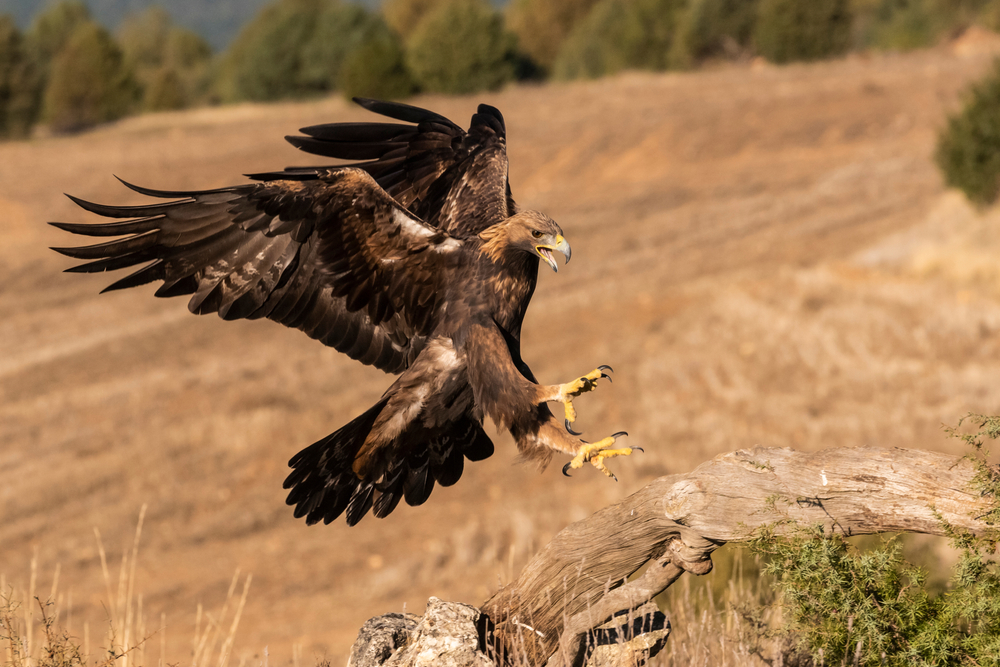
Golden eagles are majestic birds of prey known for their keen eyesight and powerful hunting abilities. With a hunting success rate of about 20%, they are adept at taking down a variety of prey, from rabbits and squirrels to larger mammals like foxes and even young deer. These eagles use their incredible vision to spot prey from great distances, often hunting from soaring heights. Once they lock onto a target, they dive at high speeds, using their sharp talons to snatch up their prey. Their broad wings and strong flight muscles allow them to glide effortlessly for long periods, conserving energy while surveying their territory.
The golden eagle’s hunting strategy involves both patience and precision, often waiting for the perfect moment to strike. They are known to work in pairs or small groups, especially when targeting larger prey, showcasing their adaptability and social behavior. In addition to their physical prowess, golden eagles are highly intelligent, capable of learning and adapting their hunting techniques. Their presence in a variety of habitats, from mountains to grasslands, attests to their versatility as hunters. However, like many predators, golden eagles face threats from habitat loss and human interference, necessitating continued conservation efforts to protect their populations.
13. Anaconda

Anacondas are formidable constrictors found in the tropical regions of South America, particularly the Amazon Basin. These massive snakes are efficient hunters, known for their ability to take down large prey with deadly precision. Anacondas primarily hunt in water, using their stealth and strength to ambush unsuspecting animals that come to drink. They rely on their powerful muscular bodies to coil around and suffocate prey, which can include anything from fish and birds to mammals like deer and capybaras. Their eyes and nasal openings are positioned on top of their heads, allowing them to see and breathe while submerged, enhancing their stealthy approach.
The hunting strategy of anacondas involves a patient wait-and-strike method, taking advantage of their natural camouflage in murky waters. Their slow metabolic rate allows them to go weeks or even months without eating after a big meal, giving them the luxury of time when it comes to hunting. Anacondas rely heavily on their sense of touch and heat-detecting pits to locate prey in dark or turbid environments. Once they secure a kill, they swallow it whole, thanks to their flexible jaws and expandable bodies. Despite their fearsome reputation, anacondas face threats from habitat destruction and hunting, making conservation efforts crucial for their survival.
14. Wolf
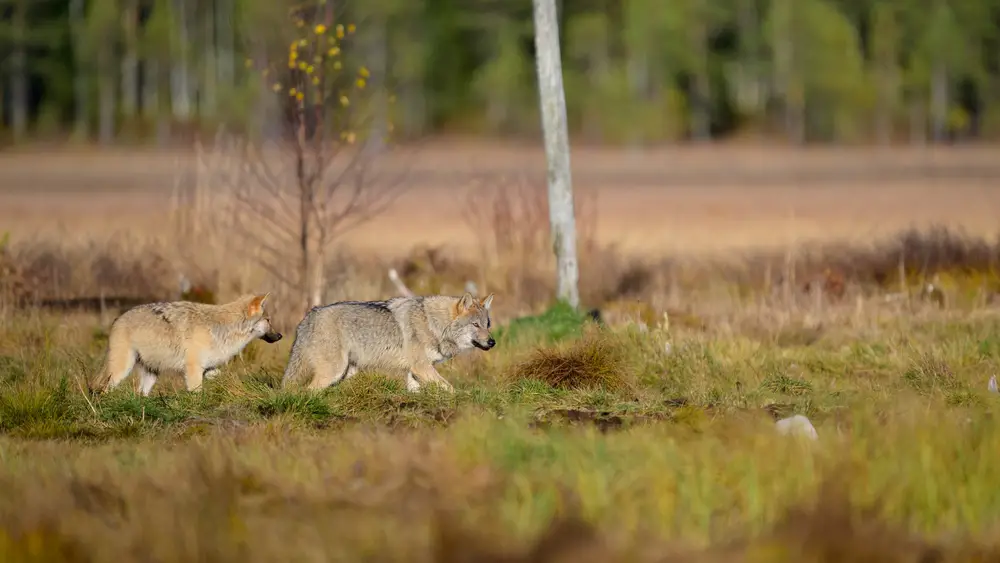
Wolves are social predators known for their effective pack hunting strategies, boasting a success rate of around 20-25%. These intelligent creatures rely on teamwork and communication to hunt large prey such as elk, deer, and bison. A wolf pack operates with a high degree of coordination, using their combined strength and endurance to wear down and isolate individual animals from herds. Wolves utilize their acute senses of smell and hearing to track prey over long distances, often working together to execute complex hunting strategies. Their social structure, with defined roles and hierarchies, is key to their success in the wild.
The hunting process for wolves often begins with silent stalking, followed by a burst of speed to initiate the chase. During a pursuit, pack members take turns leading the hunt, allowing others to conserve energy and sustain a prolonged chase. Wolves are opportunistic hunters, capable of adapting their tactics based on the terrain, prey type, and environmental conditions. Their resilience and adaptability have allowed them to thrive in diverse habitats, from forests to tundras. However, wolves face numerous challenges from human encroachment, habitat loss, and conflict, making their conservation a priority for maintaining healthy ecosystems.
